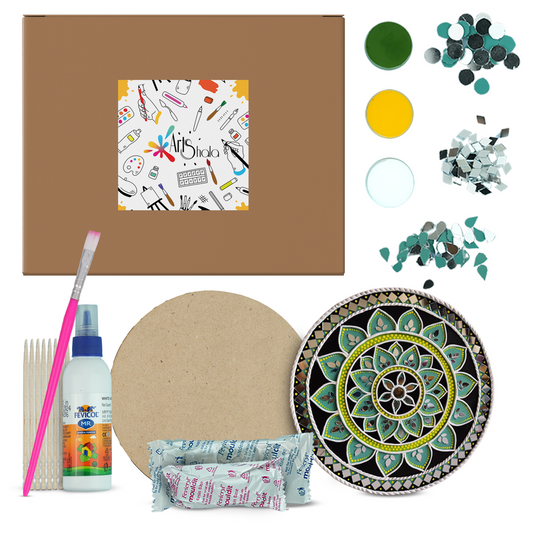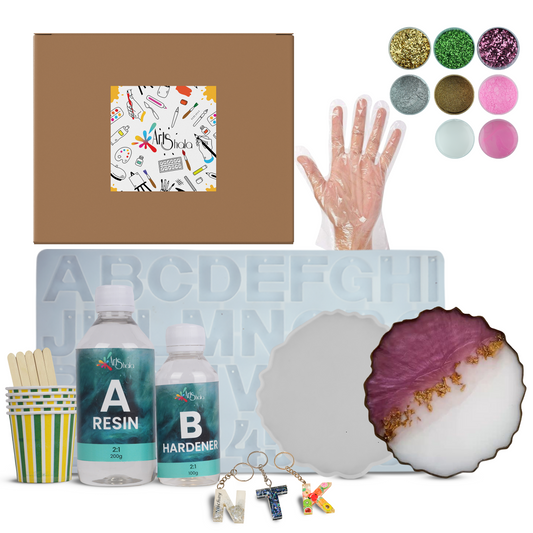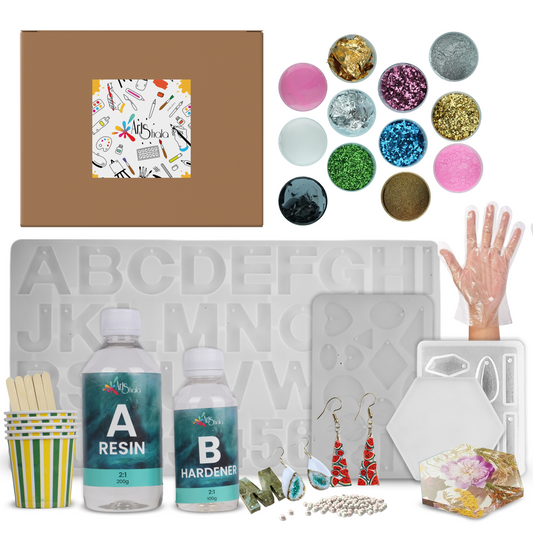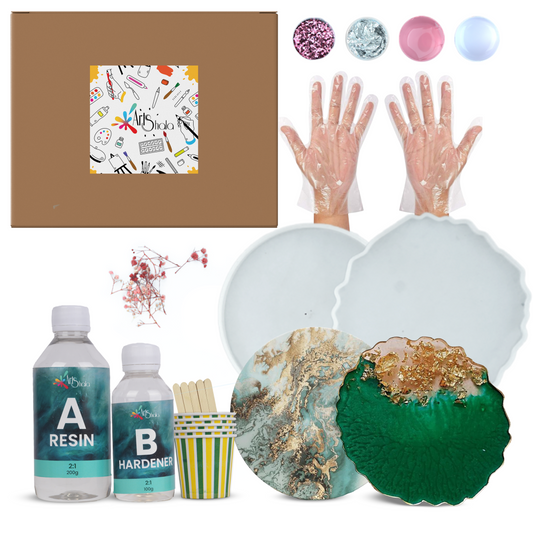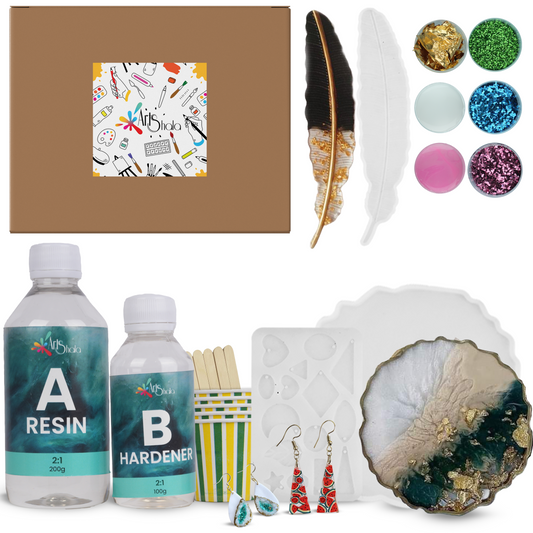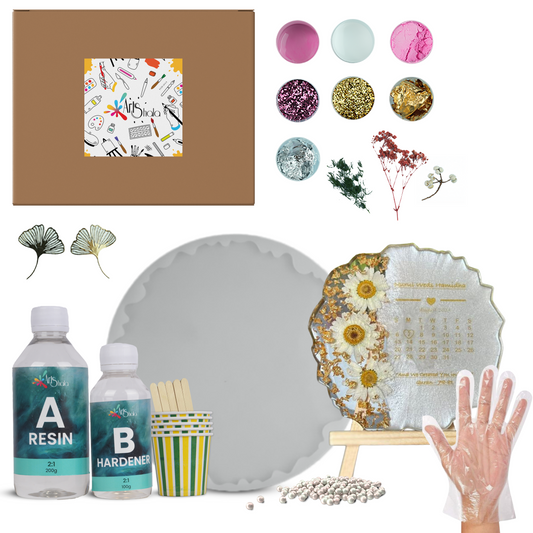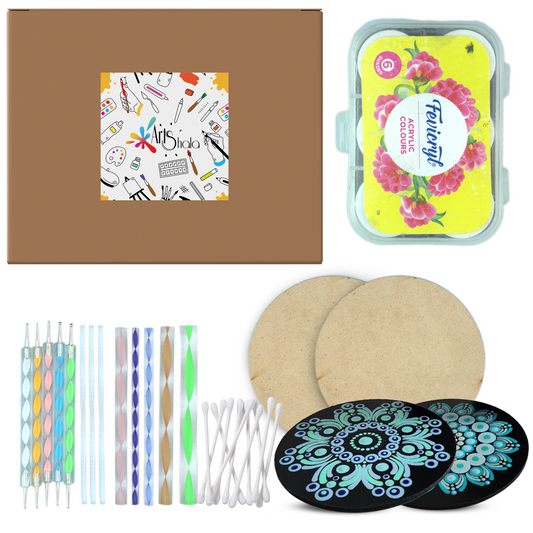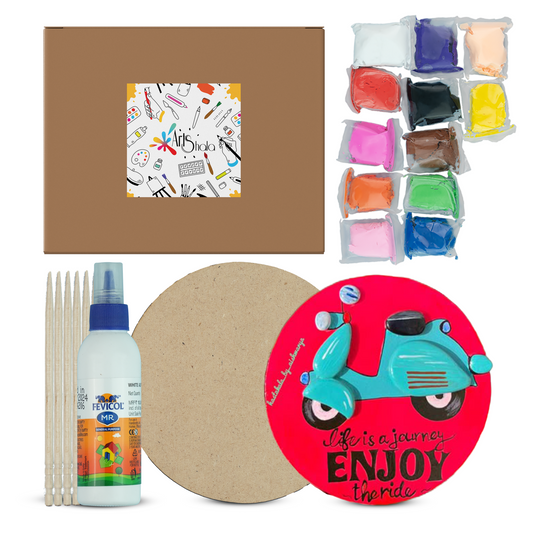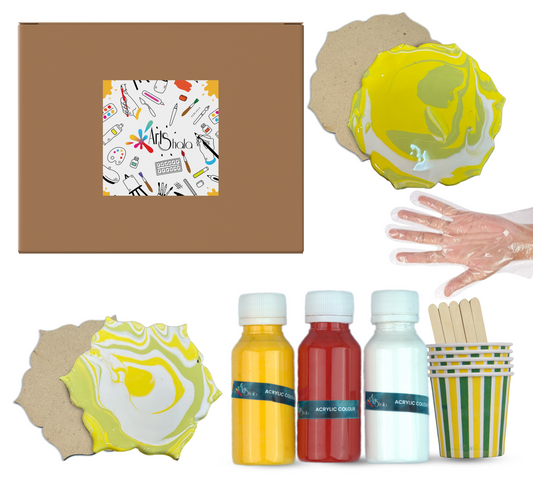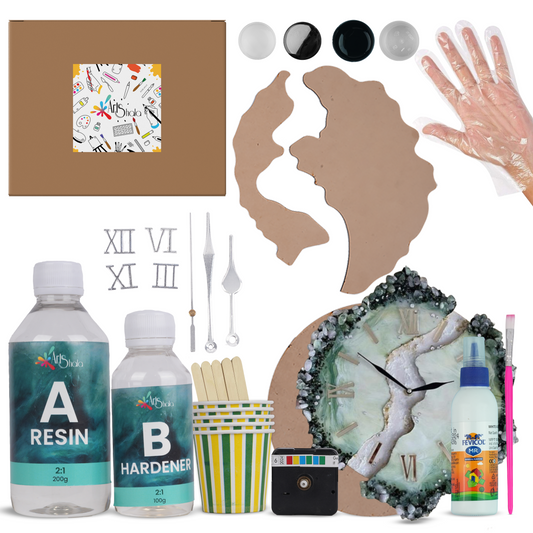5 Acrylic Colour Painting Ideas Every Artist Should Try
Acrylic painting is a beloved medium among artists, celebrated for its versatility, which allows it to be used on various surfaces like canvas, wood, or paper, and its vibrant quality, which enables it to achieve bright colours that can be layered or mixed easily. This fast-drying paint allows for a wide range of techniques and styles, making it perfect for beginners and seasoned professionals.
If you want to explore new ideas and techniques, consider joining an acrylic painting workshop. Engaging in hands-on experiences can spark creativity and introduce fresh perspectives. In this blog, we will share five acrylic colour painting ideas that every artist should try. These ideas will help you discover this vibrant medium's endless possibilities and inspire you to create stunning artwork. So, let's get started!
1. Landscape With Stencils
Landscape painting has always been captivating, allowing artists to capture the essence of a place and its atmosphere. Acrylics make this art form even more dynamic with their vibrant colours and quick-drying nature. Artists can elevate their landscape paintings by using stencils, adding unique textures and focal points. Here's a step-by-step guide to incorporating stencils into your landscape paintings:
- Choose Your Scene: Choose a landscape that sparks your creativity, such as majestic mountains, serene forests, or breathtaking seascapes.
- Create or Select Stencils: Decide whether you want to design your stencils or use pre-made ones available online. Look for stencil shapes that complement your chosen scene, such as trees, clouds, or hills.
- Prepare Your Canvas: Start by applying a base coat of acrylic paint to your canvas and letting it dry completely. This will work as the background for your stencil design.
- Position the Stencil: Once your base layer is dry, use tape to secure the stencil on your canvas and prevent accidental movement while painting.
- Apply Paint: Now comes the fun part! Use a sponge or brush to gently dab paint over the stencil openings, ensuring you cover the desired areas evenly. Take your time with this step to achieve clean lines and crisp details in your design.
- Remove and Repeat: After applying the paint, carefully remove the stencil from your canvas to reveal the intricate pattern or shape underneath. If you wish to incorporate multiple stencil designs in your artwork, repeat steps 4 and 5 with different stencils as desired.
Following these steps, you can use stencils to enhance specific elements within your landscape paintings, such as adding detailed tree silhouettes or creating realistic cloud formations.
2. Exploring Pop Art
Pop art is known for its bright, vibrant colours and bold imagery, which reflect popular culture. It was pioneered by artists like Andy Warhol and Roy Lichtenstein, who cleverly combined commercial design elements with fine art. Techniques to Achieve Pop Art Style:
- Colour Blocking: Use bright, solid colours to create visually striking artwork. This technique focuses on simplicity and immediate visual impact.
- Image Transfer: Use acrylic mediums to incorporate recognisable images from advertisements or comic strips into your artwork. This gives the piece a layered effect and adds depth.
Personal Narratives in Pop Art
Integrating personal stories or current themes into your pop art can make it more meaningful and relatable. You can explore social issues or depict everyday life experiences through the lens of pop art.
Creating Dynamic Compositions
When creating your artwork, pay attention to these factors:
- Strong Colour Contrasts: Use contrasting colours to create a sense of drama and make certain elements stand out.
- Scale Variations: Experiment with different sizes of objects or figures in your composition to create visual interest and direct the viewer's attention.
By combining traditional pop art techniques with contemporary storytelling, artists have the opportunity to create artworks that resonate with today's audience while still honouring the movement's iconic style.
3. Galaxy Painting
The mesmerising allure of galaxies provides a captivating subject for abstract expression. Using acrylic paint, artists can capture the luminosity and vastness of these celestial wonders. Inspired by images from the James Webb Space Telescope, galaxy painting allows for a vibrant exploration of colour. To create ethereal cosmic effects, consider these techniques:
- Layering Colours: Start with a dark base to represent the depths of space. Gradually layer lighter colours to create stars and nebulae.
- Wet-on-Wet Blending: Apply wet paint over wet layers for smooth transitions that mimic the flow of galaxies.
- Splatter Technique: Use a toothbrush or flicking brush to create star-like speckles across your canvas.
Experimentation is key in galaxy painting. Try using tools like sponges or palette knives to achieve unique textures that enhance your artwork's depth and dimension. Each stroke can reflect your interpretation of the cosmos, making every piece unique.
4. The Art of Dots
Dot art has a rich history, originating in the late 19th century through artists like Georges Seurat. This technique involves applying tiny dots of colour to create images, allowing the eye to blend the colours when viewed from a distance. Artists can push boundaries in dot art by:
- Combining acrylics with other mediums such as watercolour or pastels.
- Use unconventional mark-making tools, like sponges, forks, or even fingers.
Creating a Vibrant Dot Art Masterpiece
To create a vibrant dot art masterpiece with acrylics, follow these steps:
- Select a colour palette that excites you.
- Plan your composition; remember that balance is key.
- Apply dots carefully, focusing on the optical mixing of colours, creating depth and vibrancy.
Adding Texture and Volume
Building texture and volume is possible through layered applications of dots. Changing the size and density of your dots can add a three-dimensional appearance to your artwork. Experimenting with this technique opens up endless possibilities for creativity in your acrylic painting journey.
5. Exploring Scrape Art With Acrylics
Scrape art is a technique that brings spontaneity to the world of abstract painting. It encourages artists to embrace unexpected discoveries by layering, scraping, and revealing the hidden layers of paint beneath. There are several tools that artists can use to achieve interesting textures in scrape art:
- Palette knives: These are perfect for creating sharp lines and bold patterns.
- Old credit cards: They work great for scraping across the canvas, allowing colours to mix together smoothly.
- Sponges: Ideal for adding softer textures and blending colours seamlessly
Accepting the Unexpected
One of the most exciting aspects of scrape art is its potential for surprises. Unplanned outcomes during the creative process can often shape the final result. Artists may stumble upon unexpected colour combinations or textures that spark new ideas and concepts.
This method encourages a playful mindset, where mistakes are seen as opportunities for unexpected beauty. Layering different colours and then scraping them away can create a feel of depth and movement within the artwork.
Why Use Acrylics?
Acrylic paints are an excellent choice for scrape art due to their quick drying time and versatility. Here are a few reasons why many artists prefer using acrylics:
- Ease of use: Acrylic paints are water-based, making them quick and easy to clean up with soap and water. They can also be thinned with water or mixed with various mediums to create different effects.
- Wide range of colours: Acrylic paints come in various hues, allowing artists to explore endless possibilities regarding colour choices.
- Compatibility with other materials: Acrylics can be used on various other surfaces, such as canvas, paper, wood, and metal. They also adhere well to different materials, making them suitable for mixed-media artwork.
Exploring scrape art with acrylics enhances creativity and fosters an openness to artistic growth and change.
Conclusion
As an artist, it's important to explore your creativity. You can discover fresh ideas and techniques in acrylic painting by trying new things and stepping out of your comfort zone. Each concept discussed in this blog offers a different perspective, inspiring you to find new sources of inspiration for your painting projects. If you're ready to take your acrylic painting skills to the next level, Contact Us on Arts Shala today. You'll have the opportunity to learn and enhance your skills while exploring exciting new techniques!



